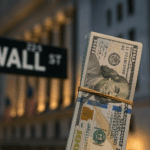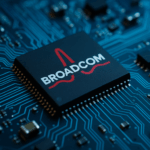In the world of investing, Charles Schwab and Fidelity (NASDAQ:FDBC) stand as two of the most recognized names, offering investors a choice between distinct strategies in their dividend-focused ETFs. Both companies cater to income investors seeking steady returns, albeit with differing approaches. Schwab emphasizes precision and targeted investment, while Fidelity leans on robust research and a broader strategy. As interest rates fluctuate, these ETFs are becoming increasingly relevant for those pursuing reliable cash flow.
Over time, both Charles Schwab and Fidelity have adapted their strategies to cater to evolving market demands. Historically, Schwab has been recognized for its low-cost, straightforward approach. In contrast, Fidelity has maintained a reputation for comprehensive research and a diversified range of investment options. This evolution reflects each company’s commitment to meeting investor needs while maintaining their distinct market positions.
How Does Charles Schwab Attract Investors?
Charles Schwab targets investors through its celebrated Schwab U.S. Dividend Equity ETF. This fund emphasizes the top 100 U.S. dividend stocks, providing a focused route for those intent on cash flow and consistency. The ETF holds prominent firms like Cisco and AbbVie, offering investors a 3.81% yield with a competitive annual dividend of $1.03 per share. Schwab’s low-cost structure and precision appeal to those seeking targeted investment strategies.
In addition to this fund, the Schwab U.S. Large-Cap Value ETF provides a different opportunity. It attracts investors who seek exposure to large-cap companies with dependable cash flows and a slightly lower risk profile. This ETF offers a broader investment base while still delivering a tangible yield, albeit at a lower percentage. Schwab’s range of ETFs reflects a versatile approach to meeting diverse investor preferences.
Why Do Investors Consider Fidelity’s Approach?
Fidelity offers investors strategies embedded in extensive research and adaptability to economic fluctuations. The Fidelity High Dividend ETF presents an enticing choice for those seeking a balance between high-yield securities and large-cap stability. This fund features tech leaders like NVIDIA and Apple (NASDAQ:AAPL), offering a 3.10% return, paired with a $1.72 annual dividend per share.
Another option is the Fidelity Dividend ETF for Rising Rates, designed for times of shifting interest rates. This ETF focuses on companies with potential for dividend growth, furnishing a 2.52% yield to its investors. Fidelity’s strategic agility makes its products appealing to those who prioritize diversified investment with a growth perspective.
Choosing Between Schwab and Fidelity
When deciding between Schwab and Fidelity, investors must weigh their priorities. Schwab provides clarity and focused investment options, while Fidelity emphasizes broader strategies supported by strong research. Both companies ensure consistent income, albeit through different pathways. Schwab’s disciplined approach is favored by those valuing simplicity, while Fidelity’s research-driven diversification attracts a different investor profile.
Both firms occupy significant spaces within the investment scene, with respective strengths catering to varied investor needs. Investors must consider their financial goals and risk tolerance when selecting between these ETF offerings. As dividend ETFs remain a cornerstone of income investing, these two companies exemplify the distinct strategic options available in the current market landscape.









